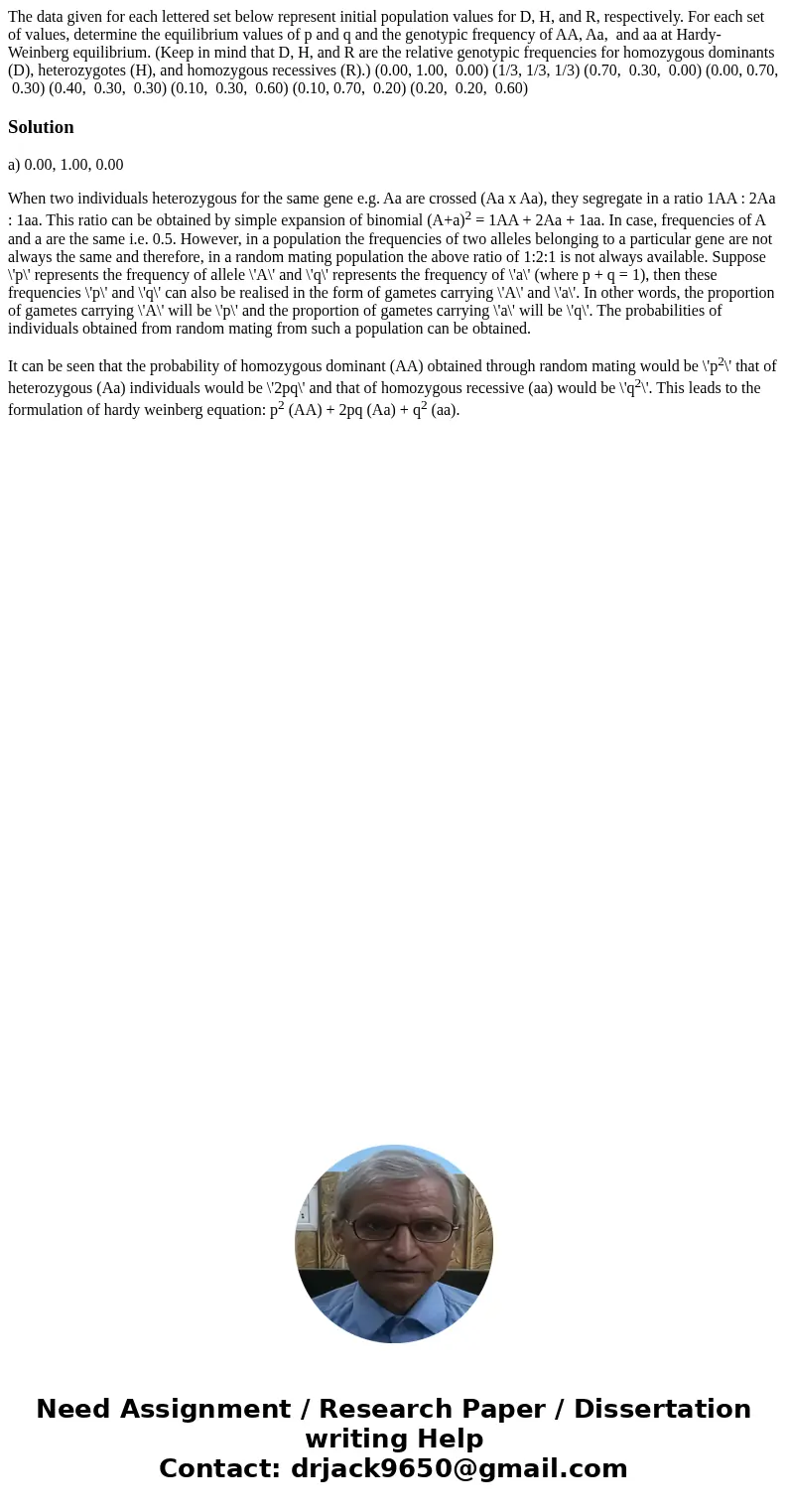The data given for each lettered set below represent initial
Solution
a) 0.00, 1.00, 0.00
When two individuals heterozygous for the same gene e.g. Aa are crossed (Aa x Aa), they segregate in a ratio 1AA : 2Aa : 1aa. This ratio can be obtained by simple expansion of binomial (A+a)2 = 1AA + 2Aa + 1aa. In case, frequencies of A and a are the same i.e. 0.5. However, in a population the frequencies of two alleles belonging to a particular gene are not always the same and therefore, in a random mating population the above ratio of 1:2:1 is not always available. Suppose \'p\' represents the frequency of allele \'A\' and \'q\' represents the frequency of \'a\' (where p + q = 1), then these frequencies \'p\' and \'q\' can also be realised in the form of gametes carrying \'A\' and \'a\'. In other words, the proportion of gametes carrying \'A\' will be \'p\' and the proportion of gametes carrying \'a\' will be \'q\'. The probabilities of individuals obtained from random mating from such a population can be obtained.
It can be seen that the probability of homozygous dominant (AA) obtained through random mating would be \'p2\' that of heterozygous (Aa) individuals would be \'2pq\' and that of homozygous recessive (aa) would be \'q2\'. This leads to the formulation of hardy weinberg equation: p2 (AA) + 2pq (Aa) + q2 (aa).

 Homework Sourse
Homework Sourse